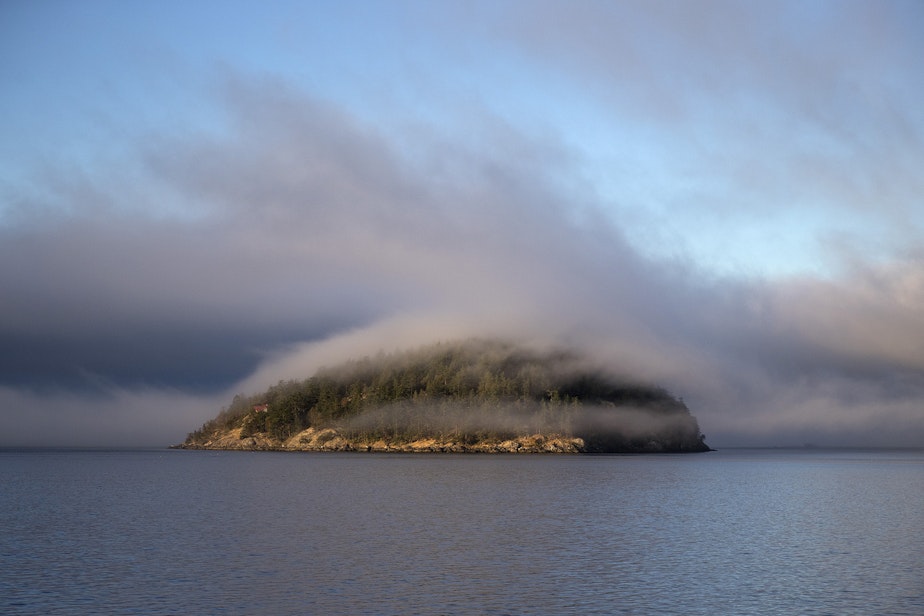Where does it all go? The journey of San Juan recycling

All of San Juan’s garbage and recycling is processed off of the island. The same goes for garbage on Orcas and Lopez islands — it’s loaded on a train, which heads to Klickitat County. Trash from San Juan goes to Cowlitz.
It’s the reason San Juan County has the most expensive landfill trash program in the state.
But recycling is a little more complicated.
Let’s go on a journey together.
You’re on San Juan Island — a little vacation, maybe with some friends.
You’re staying at a cabin, and you’ve picked up some groceries. You buy a bottle of wine and drink it — it’s pretty good. And then you put that glass bottle in the recycling bin.
That’s mixed recycling, so a garbage truck picks it up. From there, the empty wine bottle goes to the dock, and gets on a ferry.
Your wine bottle travels over water, past more islands, to land near Anacortes. And then, that load of recycling with your bottle is driven 112 miles to South Seattle, where it’s processed by a business called Recology. All together, your wine bottle takes around four hours, and at least two vehicles, to get here from your cabin vacay spot.
Sponsored
At least, that's its usual journey.
Salish Current freelance writer Nancy DeVaux says residents and local governments are making big efforts to process more recycling on the islands.
"About 10 years ago, the county entered into a contract to have all the recyclables commingled and transported to Seattle," DeVaux said. The county was hopeful that by allowing mixed recyclables, instead of asking residents to sort their own recycling, more people would choose to participate.
"And a lot of people I believe were skeptical that it could be as efficient as people sorting on their own," DeVaux said.
So people started taking the matter into their own hands.
Sponsored
Lopez Island residents decided to form the Lopez Solid Waste Disposal District, where they recycle clean, sorted materials.
"They have an amazing army of volunteers that help with sorting," DeVaux said. "They have a baler that takes all the clean plastic bottles and crushes them that they can condense into much smaller space on their trucks that they do end up having to take off the island."
The group also has an agreement to empty their glass into a reclaimed gravel pit, so that it doesn't have to be taken off the island.
They're also looking at composting with the help of a privately run farm.
Orcas Island residents are also taking recycling into their own hands. Like Lopez, they are moving ahead on composting. They also have a glass crusher, allowing them to turn glass into sand, which can be reused as a building material or for landscaping.
Sponsored
DeVaux said by removing glass and food waste, island residents can reduce the weight of what is processed off-island by up to 50%.
But she said there is still work to be done.
"The tourism community, I believe, doesn't offer as much recycling," DeVaux said, including Roche Harbor Resort, the largest resort on San Juan Island.
A spokesperson DeVaux interviewed told her that there's not currently any incentive to recycle, and doing so would require the resort to purchase a truck to deliver recycling to the San Juan transfer station.
But DeVaux said there's hope for the future of recycling on the islands. The San Juan County Solid Waste Advisory Committee is currently updating its solid waste management plan, with a goal to achieve zero waste eventually.
Sponsored
And DeVaux said the volunteer-led efforts will continue on the islands.
"There is a button that people wear that says you have to be more careful with an island," DeVaux said. "And I really think that is appropriate for San Juan."





